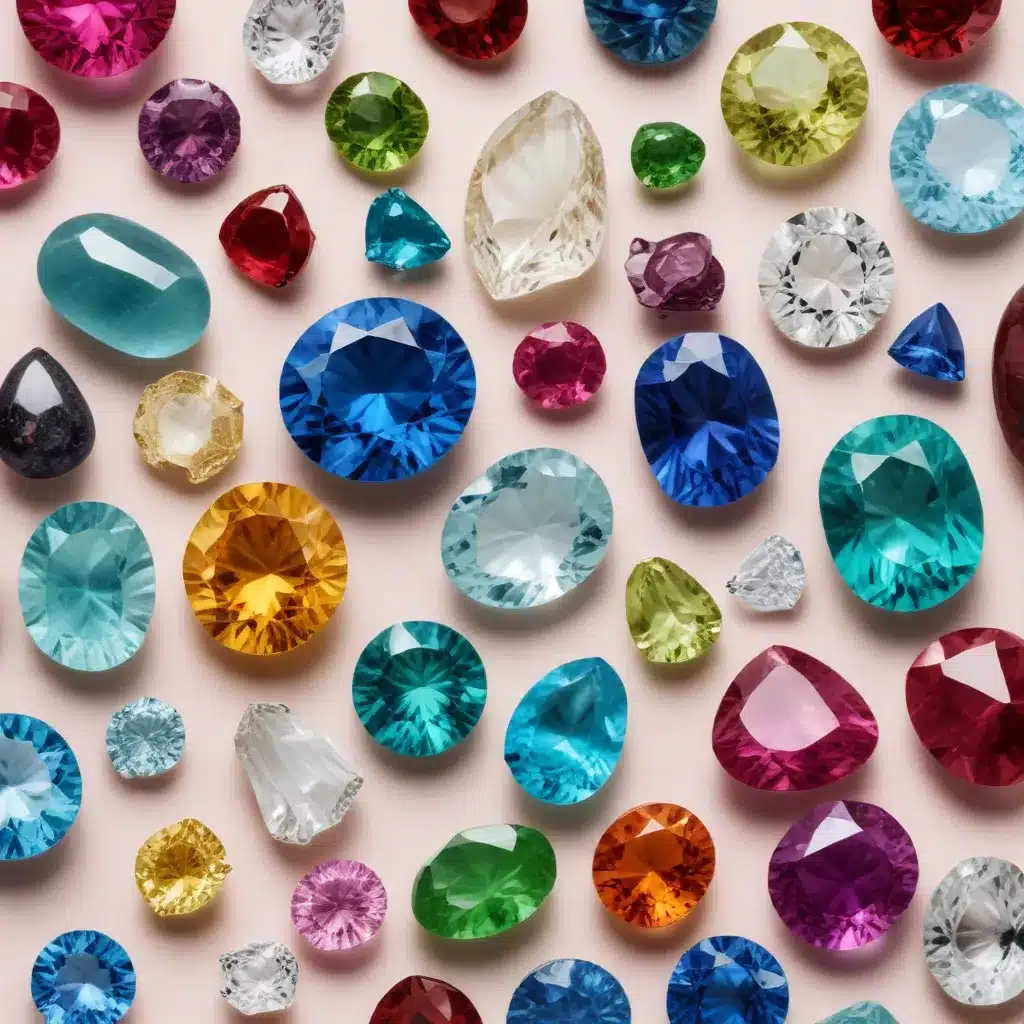
June is a month rich in birthstone diversity, offering a triad of captivating gems – pearls, alexandrite, and moonstones. These exceptional stones, often cultivated in laboratories or enhanced through specialized techniques, possess a wealth of unique optical, physical, and chemical properties that make them truly enchanting.
The Art of Cultivation
In the world of gemology, the term “cultivation” refers to the process of creating or enhancing gemstones, either through synthetic production or natural means. Synthetic gemstones are laboratory-grown crystals that replicate the chemical and physical structure of their natural counterparts, while enhanced natural gemstones undergo treatments to improve their appearance and durability.
Synthetic gemstone production employs advanced techniques like high-temperature, high-pressure (HTHP) growth or hydrothermal synthesis to cultivate gem-quality crystals. These lab-grown gems are chemically and structurally identical to their mined counterparts, yet they offer a more consistent quality and a steadier supply.
On the other hand, enhanced natural gemstones undergo various processes to enhance their inherent beauty and desirability. Heat treatment, for instance, can dramatically improve the color and clarity of stones like rubies and sapphires, while irradiation can create unique hues in diamonds and other gems.
Regardless of the cultivation method, these cultivated gemstones share a common trait – they allow for a wider availability of exceptional quality gems at more accessible prices, democratizing the world of fine jewelry.
Precious Pearls: Gems of the Sea
Pearls, the birthstone of June, are perhaps the most unique of all gemstones. Unlike other gems that are formed deep within the Earth’s crust, pearls are the result of a natural defense mechanism within certain mollusks. When a foreign particle, such as a grain of sand, slips into the mollusk’s shell, it triggers the secretion of a lustrous substance called nacre, which gradually builds up to form a pearl.
The optical properties of pearls are truly mesmerizing. Their luster, a result of the way light interacts with the numerous thin layers of nacre, gives them a captivating, almost iridescent sheen. Pearls also exhibit a range of bodycolors, from classic white and cream to more exotic shades of pink, silver, and even black, depending on the species of mollusk and the water conditions in which they are cultivated.
Pearls’ physical properties also set them apart. As the only gemstone formed by a living organism, pearls have a relatively soft Mohs hardness of just 2.5 to 4, making them susceptible to scratches and cracks. This delicacy requires special care and handling, but it also contributes to their unique charm and character.
The Chameleon Gem: Alexandrite
Another June birthstone, alexandrite, is a mesmerizing display of nature’s optical magic. This rare variety of the mineral chrysoberyl has the remarkable ability to change color, shifting from a vivid green in daylight to a rich, purplish-red under incandescent light.
This enchanting color-change phenomenon is due to alexandrite’s pleochroism, the property of displaying different colors when viewed from different angles. The gem’s unique chemical composition and crystal structure cause it to absorb certain wavelengths of light while reflecting others, resulting in its captivating color transformation.
Alexandrite’s rarity and the complexity of its color-changing properties have made it one of the most valuable gemstones in the world. High-quality alexandrite specimens, with a distinct and consistent color change, can command astronomical prices on the market.
Beyond its optical allure, alexandrite also boasts impressive physical properties. With a Mohs hardness of 8.5, it is a relatively durable gemstone, making it suitable for use in a variety of jewelry pieces. Its refractive index and dispersion values also contribute to its brilliant, sparkling appearance.
Moonstone: Capturing Celestial Beauty
The third June birthstone, moonstone, is a mesmerizing variety of the mineral feldspar. What sets moonstone apart is its captivating adularescence, a shimmering, billowing effect that seems to roll across the surface of the stone as it is moved.
This optical phenomenon is caused by the diffraction of light within the stone’s microstructure, which is composed of alternating layers of two different feldspar minerals. As light passes through these layers, it is scattered and reflected, creating the enchanting, moon-like glow that gives moonstone its name.
Moonstone’s color palette ranges from colorless to white, gray, peach, and blue, with the prized “blue moonstone” being the most valuable. The intensity and quality of the adularescence are the primary factors that determine a moonstone’s worth, as they contribute to the stone’s overall visual appeal.
While moonstones are relatively soft, with a Mohs hardness of 6 to 6.5, their delicate beauty is part of their charm. They require gentle care to maintain their pristine appearance, but the captivating glow they emit makes them a truly unique and desirable gemstone.
Birthstone Brilliance: Celebrating June’s Gems
June’s birthstones – pearls, alexandrite, and moonstones – each possess a distinct set of optical, physical, and chemical properties that make them truly exceptional. Whether cultivated through advanced laboratory techniques or enhanced through specialized treatments, these gems offer a wealth of beauty and fascination for jewelry lovers and gemstone enthusiasts alike.
At Shelby Gem Factory, we take pride in our extensive collection of cultivated gemstones, including a stunning array of June birthstones. Our team of experts is dedicated to sourcing the finest quality gems, ensuring that each piece we offer meets the highest standards of craftsmanship and beauty. Discover the allure of these captivating stones and let them inspire your next jewelry masterpiece.

